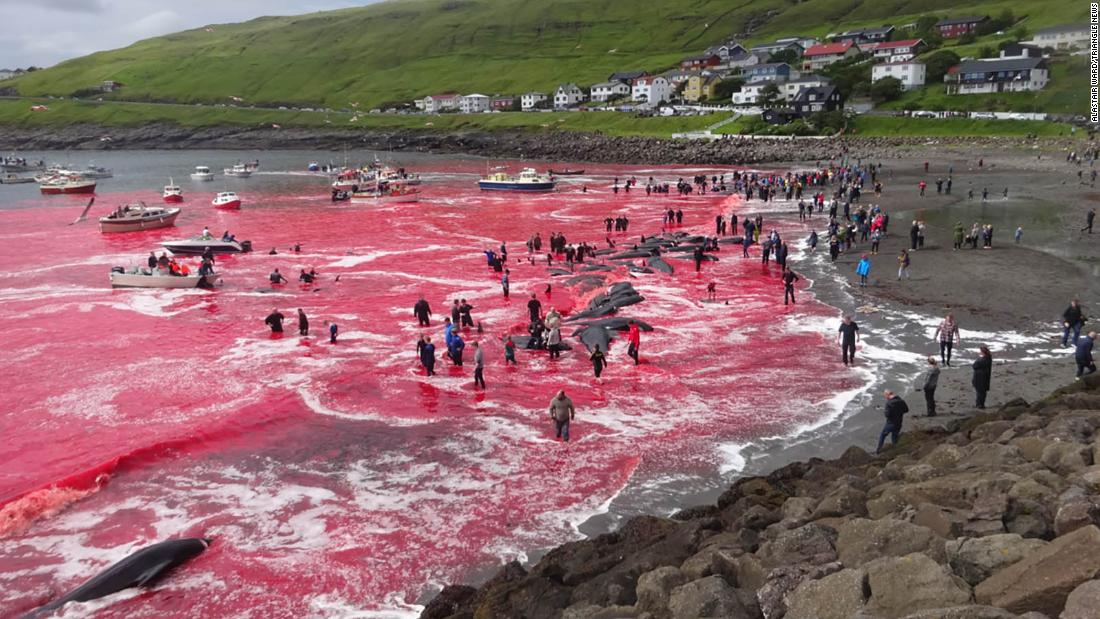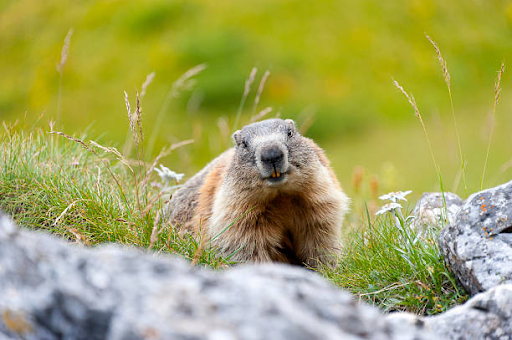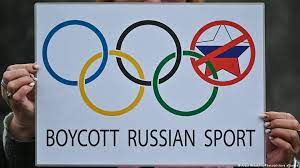Faroe Islands’ Whale Hunting Tradition
This is the second in a series of articles exploring island societies to examine how issues affecting small isolated communities can help us understand the world as a whole.
Not long after St. Patrick brought Christianity to Ireland, Celtic monks braved the harsh waters of the North Sea, and sailed two days and one summer night towards Polaris, reaching the rugged and rocky shores of the Faroe Islands. The archipelago lies between Iceland and Norway, and endures almost constant wind and rain. The coastline is crowded with countless varieties of seabirds, which build their nests on the treacherous cliffs and feed on the abundant ocean waters. The land is covered by grasses and wildflowers, but devoid of any trees. And in this harsh environment, the hermits enjoyed a peaceful existence — until the Vikings invaded the islands.
No one knows for sure when the Nordic pirates first settled the Faroe Islands. Most believe that Vikings established a settlement in this isolated land in the 9th or 10thcentury. For these early inhabitants, the endless bird population was a major source of sustenance. The sea-faring people were also drawn to the archipelago by the abundance of sheep that fed on the low-lying vegetation. It’s not surprising that scholars believe “Faroe” was derived from an Old Norse word for sheep, fær. In addition, the wide variety of marine life in the surrounding sea became a mainstay in their diet, and no catch was more prized than Globicephala melas, the long-finned pilot whale.
Until the 19thcentury, Norway ruled the Faroe Islands. In 1298, the future King of Norway, Duke Haakon, enacted a royal decree on the Faroese people. The laws were drafted in the “Sheep Letter,” which is the oldest surviving document from the islands. Of the 16 points of law described in the manuscript, most dealt with sheep ownership and commerce, but also included rules regulating the sharing of whales stranded or driven to shore. The whale hunts, called grindstráp, or the grind, are still practiced today by the descendants of the Viking settlers. Throughout the years, the grind has been carefully documented and regulated, helping to maintain an ancient tradition unique to these people. Since 1709, every animal taken in during a grind has been recorded. The species of each whale hunted, as well as the amount of meat it produced has been documented.
The methods used for the grind have not changed much over the centuries. During the summer months, when a school of pilot whales is sighted near the shore, a message is delivered to the local residents to prepare for the hunt. A bonfire was the main source of communication in the past, now replaced by radios, cell phones, and social media. The residents then quickly gather in their boats, and surround the whales in a semicircle fashion to drive them towards a shallow beach; small motorboats have replaced traditional wooden rowboats. Another set of locals wait in one of the beaches designated by the Faroese government as suitable for harvesting of the whales. Local authorities supervise the slaughter, and the whale meat is distributed equitably to the residents participating in the grind. There is no commercial whaling industry in the Faroe Islands; the hunters and their families consume the meat themselves. The grind is an integral part of the culture for these Viking descendants, and the whale meat is a traditional source of food in this land where agriculture is practically non-existent. Each year, approximately 800 whales are hunted and consumed in much the same way they did for more than 1000 years.
Recently, the grind has been scrutinized and criticized by the outside world. Images of the slaughter can shock those unfamiliar with the ritual, as it may be difficult to stomach the site of dozens of recently killed whales lying on a beach, their spinal cords cut with a mønustingari, a dedicated knife which is purported to kill the animals quickly and humanely. Large arteries lie next to the spinal cord, and when severed, profuse bleeding ensues, with the waves of the shore turning crimson red. When foreigners protest with repulsion, the Faroese reply that their ancient practice is no different than the livestock industry of other nations. Instead of killing animals in slaughterhouses, hidden from view, the Faroese claim that they are more transparent, procuring their meat in wide-open spaces. Instead of the blood of pigs and cattle being disposed into a drain, the whales’ blood drains into the ocean. When animal rights activists cry inhumanity, the Faroese accuse the outsiders of hypocrisy. Furthermore, they assert that the grind has been part of their culture for more than a 1000 years.
As one approaches the small archipelago by plane, the two-hour flight from Iceland leads to a group of about 20 islands clustered in the North Atlantic. It is an autonomous country within the Kingdom of Denmark, with a total land area of about 500 square miles and inhabited by almost 50,000 people. From a distance, the islands appear to be part of different world, isolated from the rest of Europe by a vast sea. However, when you arrive, it doesn’t feel much different from a quaint fishing town in New England or Alaska. There are paved roads, hotels, and grocery stores, but the residents rely on exports for much of their food supply, because the islands’ inhospitable landscape and weather have severely limited farming. Although fishing remains a major source of food and exports, the Faroese no longer depend on whale meat as a crucial part of their diet. The grind continues to provide an essentially free source food for the Faroese, but the islanders are neither poor nor malnourished. The critics of the grind claim that it is insignificant to the islands’ economy. Arguably, the grind has become more of a cultural event, not a necessity for survival, but serving as an integral part of their identity.
Whaling has been an important aspect of numerous cultures for thousands of years, but only a few nations still practice the hunting tradition. International Whaling Commission (IWC) was formed in 1946 to regulate the whaling industry. In 1986, the IWC banned commercial whaling for its member nations due to the diminished whale population. The Faroe Islands were not affected by this ban because it was not one of the participating nations of the IWC. Interestingly, Denmark is a member of the IWC and has agreed with the ban. Although Denmark has had control over Faroe Islands since the Treaty of Kiel signed with Norway in 1814, Denmark does not regulate any domestic issues in the Faroe Islands, including fishing and trade. Much like Greenland, Faroe Islands are under the umbrella of Denmark regarding numerous matters, including the military, currency, and foreign affairs; however, Faroese Parliament controls the local hunting and fishing regulations, including whaling. For many centuries, the grind has been conducted under traditional customs. Today, its government strictly regulates the hunt. Laws control the number of kills per year and approve the methods used for the slaughter. Critics of the grind argue that the sole purpose of Faroe Islands’ selective autonomy is to maintain its archaic whaling tradition.
When confronted with the apprehensible notion of hunting potentially endangered animals, the Faroese can point to the puffin. Knowing the history and geography of the Faroe Islands, it would not be surprising to learn that there are other somewhat unique food sources traditionally consumed by theses people. The puffin is one of them. The Atlantic puffin, to be more precise, breeds in many North Atlantic islands. Everything about the puffin is cute, starting from their name to their big colorful beaks, giving them the nickname “clowns of the sea.” It may be shocking to many that the Faroese have included these cute sea birds as an essential part of their diet. Unfortunately, their numbers are dwindling. In 2015, the International Union for Conservation of Nature (IUCN) listed the Atlantic Puffin as “vulnerable,” meaning they believe that the birds will be endangered unless conditions that threaten their survival change. Most scientists agree that the puffin’s plight is not caused by overconsumption, but by environmental causes. They believe that global warming has reduced the quantity of the seabirds’ food supply in the waters off their traditional breeding grounds. In any case, the Faroese are dedicated to the preservation of the puffin’s population by enforcing catch limits. The Faroese assert that if the population of the pilot whales drops, like the puffins, they will stop the grind.
The long-finned pilot whale is considered a large oceanic dolphin, and can reach about 6 meters in length and 2000 kg. A puffin is similar in size to a pigeon and dwarfed by a pilot whale, but it is easier to calculate the number of small birds flying in view than to estimate the abundance of the larger underwater creatures. There are no reliable numbers regarding the population of pilot whales, and they are categorized as “Data Deficient” by the IUCN. However, the Faroese believe that their numbers are stable, and do not believe the grind has endangering their existence. Without conclusive proof otherwise, it would be difficult to use potential extinction as evidence against the grind. But there is another popular argument used to condemn the grind; critics point out that the pilot whales are highly intelligent, and should not be killed or consumed.
Determining objectively which animals deserved to be eaten by humans seems like a difficult task. Most industrialized nations agree that endangered species should be off limits, but other criteria are more debatable. Although “cuteness” may drive some people to be appalled by a roasted puffin, it would seem hypocritical to condemn this Faroese delicacy while munching on a McNugget made from an ugly chicken. Intelligence of the animal, however, seems like a more convincing criterion. If an animal does not know it is being slaughtered, or does not feel pain, it would be easier to justify its consumption. However, if the pilot whale realizes that it is sentenced to death without a trial, and sees his family members crying for help, it’s not difficult to portray the grind as a cruel evil act. But how do you measure an animal’s cognitive ability, and at what level do you consider the animal to be too intelligent to be included on a restaurant menu?
There are no IQ tests for animals. However, an interesting method for a rough estimation of an animal’s intelligence is the calculation of the encephalization quotient (EQ). It is the ratio of the actual brain size versus the predicted brain size of a species; the predicted brain size is determined by the overall body size of the animal. Human’s EQ is approximately 7.5, while a dog is 1.2. If most people consider dogs to be intelligent, and if society restricted the consumption of intelligent animals, EQ of livestock animals should be less than 1.2. Pigs, considered by some to be intelligent, have an EQ of approximately 0.4. Cattle also have a relatively low EQ, measured at 0.5. Whales and dolphins, on the other hand, have EQ in the range of 1.8 to 4.5. There are numerous other scientific and behavioral studies that support the high cognitive levels of Cetaceans, an order of animals that include whales, porpoises, and dolphins. Aside from large brains, these aquatic mammals also have highly complex brain structures. The long-finned pilot whale, for instance, has more neocortical nerve cells than any other mammal, including humans. It’s generally believed that the development of the neocortex during evolution is what gave humans superior intelligence. Aside from anatomical evidence, there are behavior observations of Cestaceans that also help to confirm the presence of an advanced level of cognition. Scientists have described highly evolved problem-solving abilities, complex play behavior, creativity, and communication skills. If the entire world could agree that intelligent animals should not be eaten, whales would undoubtedly be excluded from the diet. However, there is no universal consensus, and social pressures from outside cultures that threaten a local tradition are seldom met with enthusiasm.
The most publicized opposition to the grind has come from the Sea Shepherd Conservation Society. Founded in 1977 by Paul Watson, a former member of Greenpeace, the marine conservation organization was formed to enact more aggressive methods of protest. Watson has led campaigns against the grind in 1985, 1986, 2000, and 2011. In perhaps their most aggressive crusade, Sea Shepherd returned to Faroe Islands in 2014 to launch Operation Grindstop. Numerous members, including the American actress Pamela Anderson, visited the islands during the summer months and tried to stop the hunt. They patrolled the 23 beaches or “grind bays” and tried to put themselves between the whales and the hunters. However, local laws prohibit any unauthorized individuals to be within one mile of the grind. On one occasion, when eight Sea Shepherd members in boats (one of the boats was donated by actor Charlie Sheen) and six land based protestors tried to obstruct the hunt, the Royal Danish Navy immediately dispatched helicopters and high speed boats to arrest the outsiders. The grind proceeded as planned, and 33 pilot whales were slaughtered. Despite the apparent failure of their operation, Watson claimed victory, stating they were successful in diverting 270 other pilot whales from the islands during the summer. He was also pleased that they were able to raise public awareness throughout the world, as well as expose Denmark, a member of the European Union, as a supporter of the grind.
In a press conference at the Faroe Islands, Pamela Anderson spoke for Sea Shepherd. She stated that the Faroese no longer needed to kill the pilot whales for food, and that the cruel and brutal tradition should stop. She urged the younger generation to resist the pressures from their parents. A Faroese citizen asked Anderson what the difference would be if they stopped the grind and imported meat from other countries instead; in either scenario, animals must die. She suggested that they look to other sources of food, rather than eating meat. She admitted that she is a vegan, and did not imply eating American beef or pork is any more ethical than whale meat. The fact is Sea Shepherd is a vegan organization, with all of their ships serving only vegan meals. According to Watson, he opposes consumption of livestock as well. He believes that the livestock industry is one of the greatest contributors of greenhouse gases, and continuing to eat meat will lead to ecological disaster. Although the stance on meat consumption taken by Anderson and Watson may be the correct direction for the future of the human species, vegans comprise only a small percentage of the population in the industrialized world. A Harris Interactive poll conducted in 2008 found that only 3.2% of Americans are vegetarians and 0.5% are vegans. If the goal of Sea Shepherd is to convince the global community to condemn the behavior of a very small segment of the world population, their message may be lost when the average person realizes that the leader of the conservation also objects to actions of most people, namely eating livestock meat. The argument becomes more muddled when you consider the target of Sea Shepherd’s wrath. When Sea Shepherd protests a large industrialized nation such as Japan for their support of the commercial whaling industry, an average person may feel more empathetic to their cause. However, when a tiny archipelago is attacked for carrying on a 1000-year tradition, serving minimal if any financial gain, the empathy from the public may shift towards the Faroese.
Mykines lies at the westernmost point on the Faroe Islands. A small ferry transports approximately 50 hikers to the tiny island once each day during the summer months. The travelers are warned that if the weather turns, the return passage is not guaranteed, and they may have to seek shelter in one of the few private homes on the island. On an occasional welcoming day, when the winds are calm and the clouds are not threatening, brave souls board the Mykines ferry for a 30-minute boat trip. What awaits them is one of the most beautiful places on earth. A hike from the boat landing to the iconic lighthouse winds through lush green perches overlooking sheer cliffs battered by ocean waves. And everywhere you turn, there are puffins. There are thousands and thousands of beautiful birds nesting in their burrows, and just as many flying around every visitor fortunate enough to witness one of nature’s greatest miracles. Unfortunately, the peaceful hike can be interrupted by a scolding individual berating the uninformed guest.
Due to the publicity surrounding the grind, the Faroe Islands have become a magnet for amateur and professional conservationists. When there is no imminent threat of a whale hunt, some of these well-intentioned individuals seek to “save” other helpless species. In Mykines, when a visitor gets too close to a Puffin burrow to take that perfect selfie they plan to post on social media, the self proclaimed puffin police screams at him, and continues on with a patronizing lecture. The locals are more than familiar with these intruders. Unsurprisingly, the Faroese are not pleased with their presence, as few are happy to be criticized, especially by outsiders.
Many cultures practice traditions that are deemed unacceptable by the outside world. The current attacks on the Faroese whaling tradition have not yielded meaningful concessions, but may have energized the threatened citizens to hang on to their practice as a defiant stance against any foreign intervention. An analogous narrative exists today in the United States regarding gun rights. The high prevalence of firearms in the US has appalled most industrialized nations and many Americans. However, gun-rights supporters site the tradition of gun ownership embedded in their culture and constitution. Too often, the gun control faction uses denigrating language to attack the second amendment supporters. Unfortunately, calling your opponents ignorant and evil may erase any hope for meaningful gun control regulations, or a change in any cultural norms. As most Americans feel that whale hunting is wrong, Faroese undoubtedly believe Americans should enact tougher gun control laws. Changing a culture is difficult, if not impossible, but diplomacy and empathetic dialogue may be more productive than combative denunciation.










